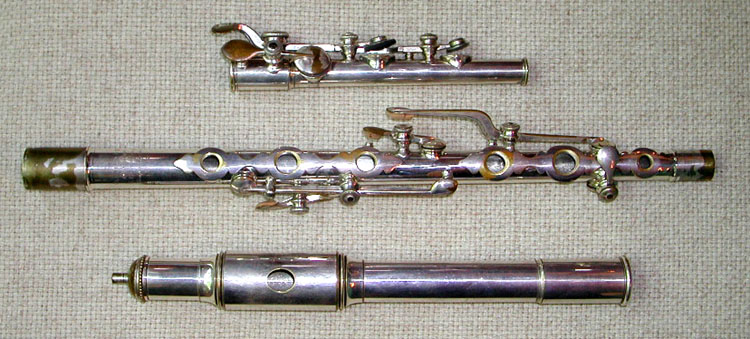Incidentally, I don't think it means you can't have lined flutes - you just have to come up with an approach where shinkage of the wood (which
is inevitable unless you can guarantee the humidity never drops too low) will not cause conflict with the liner.
For example, take my silver head as a starting point:

In this design, the wooden barrel doesn't go all the way around the head - there's a neatly cut lengthwise slit at the back. The wood is bonded to the metal only around the embouchure hole (to keep the joint between wood and metal airtight) - the rest of the wood is free to slide back and forth with the climate. Now imagine that instead of a lip-plate sized bit of wood at the embouchure, we had a full head. The only difference being that the full head also has the slit down the back, and is only bonded to the liner around the embouchure. Bingo - a lined head that won't split on your next holiday to Arizona.
Now you couldn't have a slit down the barrel, as it would introduce leakage into the socket, so I'd suggest my New Improved Tuning Slide approach here - the metal slide being encased in cork to permit movement without stressing the wood.
End result - a fully lined head and barrel that should resist annual humidity cycling. The only giveaway would be the slit down the back of the head - that can be as narrow as you like and, if you prefer, filled with a black flexible sealant or strip. I'll get around to making one some day.
So, I don't think this has to be hard or has to limit choice - it's a question of how best to achieve these improvements.
And I certainly don't think all makers have to use my system (some already do) - but they are free to if they like. I'd just like them to look at the evidence history provides us and come up with some strategy to avoid repeating it.
"Those who cannot remember the past are condemned to repeat it." - Santayana.
Terry

